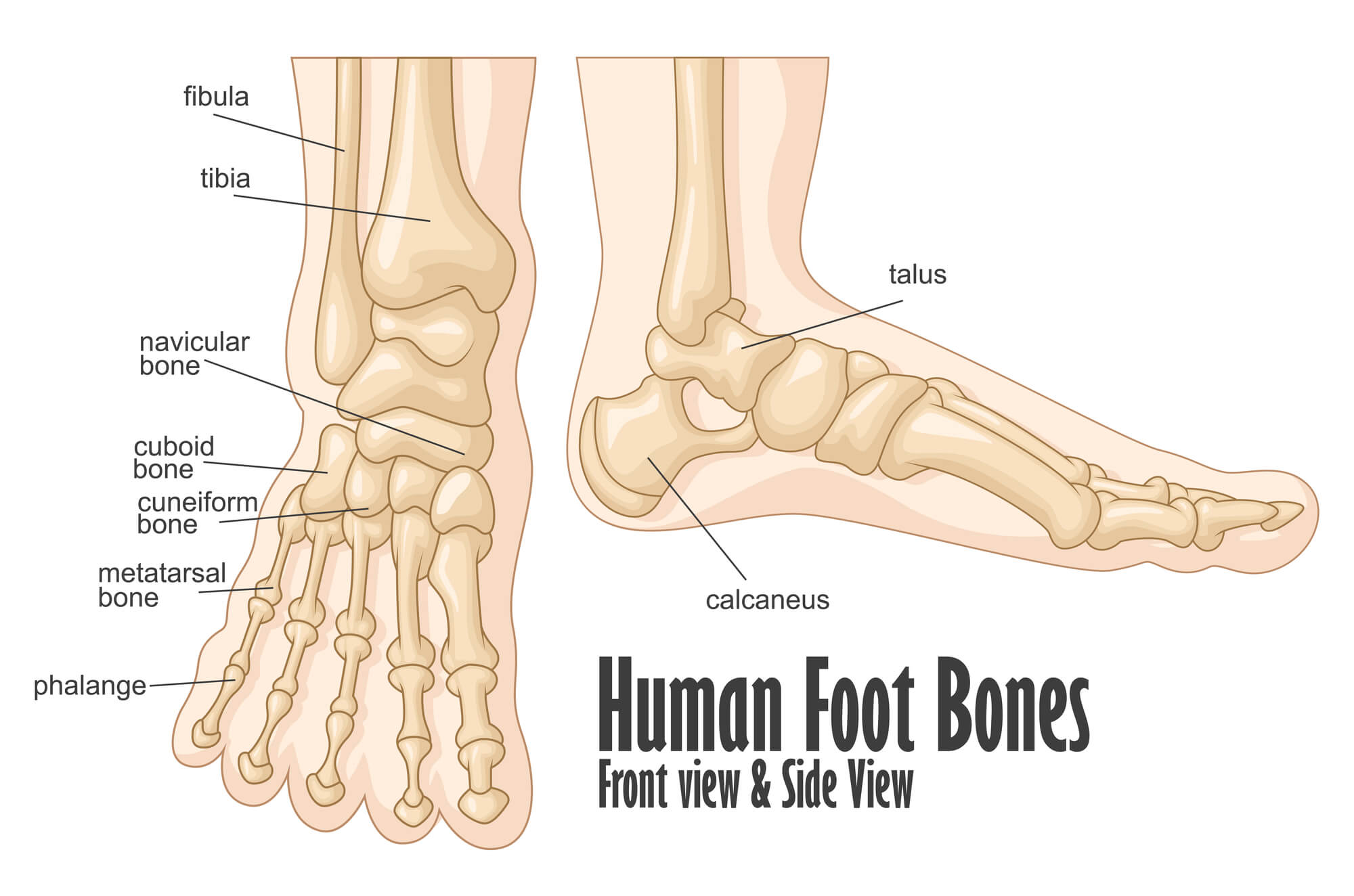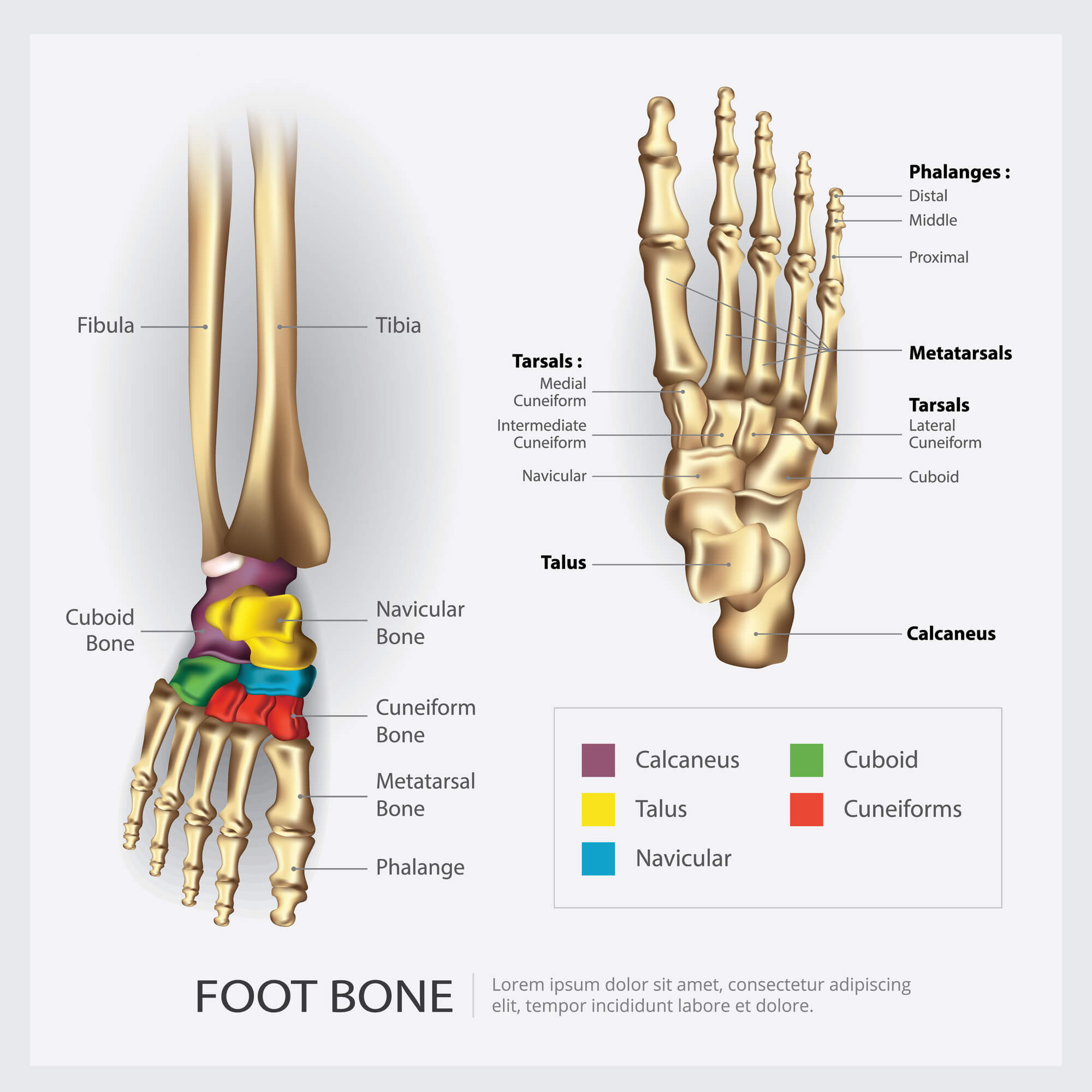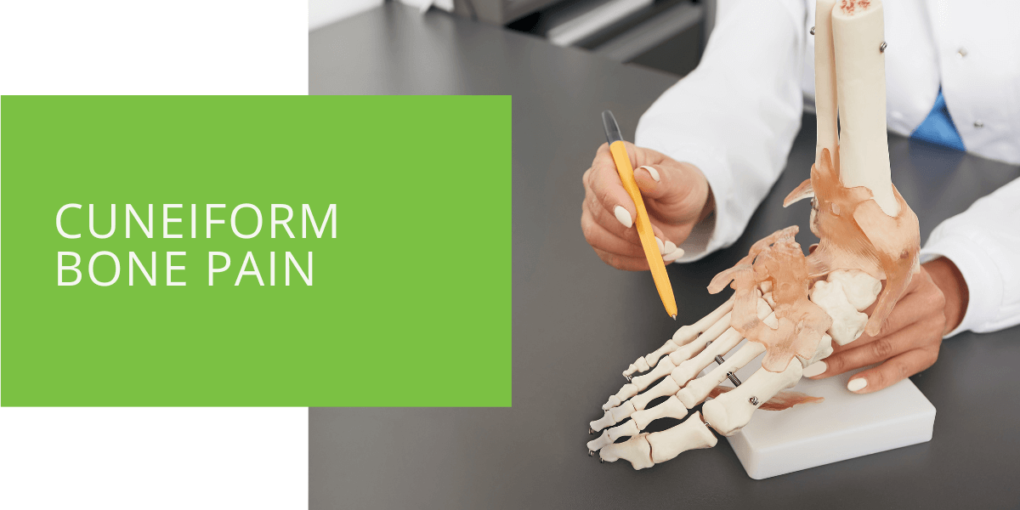Understanding Cuneiform Bone Pain
Cuneiform bone pain can be a debilitating condition that can cause a range of foot problems, from mild discomfort to severe pain and limited range of motion. This article will explore cuneiform bone pain in detail, including its causes, symptoms, diagnosis, and treatment options.
What Are Cuneiform Bones?
Cuneiform bones are a group of three bones located in the midfoot, between the ankle and the toes. They are wedge-shaped bones that articulate with the tarsal bones and metatarsals, providing support and stability to the foot and ankle.
The three types of cuneiform bones are the medial cuneiform, intermediate cuneiform, and lateral cuneiform.
What Causes Cuneiform Bone Pain?
Cuneiform bone pain can be caused by a variety of factors, including:
- Trauma or injury to the cuneiform bones: A direct blow or impact to the foot can cause a fracture or dislocation of the cuneiform bones, leading to pain and swelling.
- Stress fractures of the cuneiform bones: Repetitive stress or overuse can cause small cracks or fractures in the cuneiform bones, resulting in pain and discomfort.
- Arthritis or joint inflammation: Inflammation of the joints or surrounding tissues can cause pain and stiffness in the cuneiform bones.
- Tendinitis or tendinopathy: Inflammation or degeneration of the tendons in the foot and ankle can cause pain and discomfort in the cuneiform bones.
Cuboid syndrome, a condition in which the cuboid bone in the foot becomes dislocated or subluxated, can also cause pain in the lateral midfoot that may be mistaken for cuneiform bone pain.

Symptoms of Cuneiform Bone Pain
The symptoms of cuneiform bone pain may vary depending on the condition's underlying cause. However, common symptoms of cuneiform bone pain may include the following:
- Pain or discomfort in the midfoot, particularly on the top or bottom of the foot
- Swelling or redness in the midfoot
- Difficulty walking or standing
- Tingling or numbness in the toes
- Limited range of motion in the foot and ankle
Diagnosis of Cuneiform Bone Pain
A podiatrist will perform a physical examination to diagnose cuneiform bone pain and ask about the patient's symptoms and medical history. The podiatrist may also order imaging tests, such as X-rays or magnetic resonance imaging (MRI), to assess the foot's structure and detect any underlying conditions contributing to the cuneiform bone pain.
Differential diagnosis may also be necessary to rule out other conditions causing the patient's symptoms, such as a lateral ankle or ligament sprain.
Treatment Options for Cuneiform Bone Pain
The treatment options for cuneiform bone pain depend on the severity of the condition and the underlying cause. Non-surgical treatment options may include:
- Rest and ice to reduce pain and inflammation
- Non-steroidal anti-inflammatory drugs (NSAIDs) for pain relief
- Immobilization with a cast, brace, or walking boot
- Custom orthotics or shoe inserts to provide additional support and cushioning
- Physical therapy for strengthening and stretching exercises
- Surgery in severe cases
Peroneus longus subluxation, which can cause pain in the lateral midfoot, may require surgical intervention to correct the alignment of the bones.

Prevention of Cuneiform Bone Pain
To prevent cuneiform bone pain, it is important to wear proper footwear that provides adequate arch support and shock absorption. Gradual increase in physical activity and stretching and strengthening exercises can also help to improve the flexibility and strength of the foot and ankle.
People who participate in activities that involve repetitive stress or impact on the feet, such as running or jumping, should take extra precautions to prevent cuneiform bone pain. They should also pay attention to foot pain or discomfort and seek medical attention early on to avoid further damage to the feet.
Cuboid Syndrome and Cuneiform Bone Pain
Cuboid syndrome is a condition that can cause pain and discomfort in the lateral midfoot, which may be mistaken for cuneiform bone pain. Cuboid syndrome occurs when the cuboid bone in the foot becomes dislocated or subluxated, causing pain in the lateral midfoot that may radiate to the heel and toes.
The symptoms of cuboid syndrome may include pain outside the foot, swelling, and difficulty bearing weight on the affected foot. Peroneus longus subluxation is a common cause of cuboid syndrome, as the peroneus longus tendon helps to stabilize the cuboid bone in the foot.
Treatment for cuboid syndrome may include rest, ice, compression, and physical therapy to strengthen the muscles and improve the range of motion in the foot and ankle.
When to See a Podiatrist
People who experience persistent pain or discomfort in the midfoot, swelling, redness, or warmth in the midfoot, difficulty walking or standing, or numbness or tingling in the toes should seek medical attention from a podiatrist.
A podiatrist can diagnose the underlying cause of foot pain and recommend appropriate treatment options to manage the condition effectively. Early diagnosis and treatment can help to prevent further damage to the feet and improve the chances of a full recovery.
Conclusion
Cuneiform bone pain can be debilitating and interfere with daily activities and quality of life. By understanding the causes, symptoms, diagnosis, and treatment options for cuneiform bone pain, people with this condition can take proactive steps to manage their foot health effectively.
Prevention and management of cuneiform bone pain involve wearing proper footwear, avoiding repetitive stress or impact to the feet, performing stretching and strengthening exercises, and seeking medical attention early on to prevent further damage. By taking a proactive approach to foot health, people with cuneiform bone pain can enjoy a better quality of life and stay active and healthy for years.

